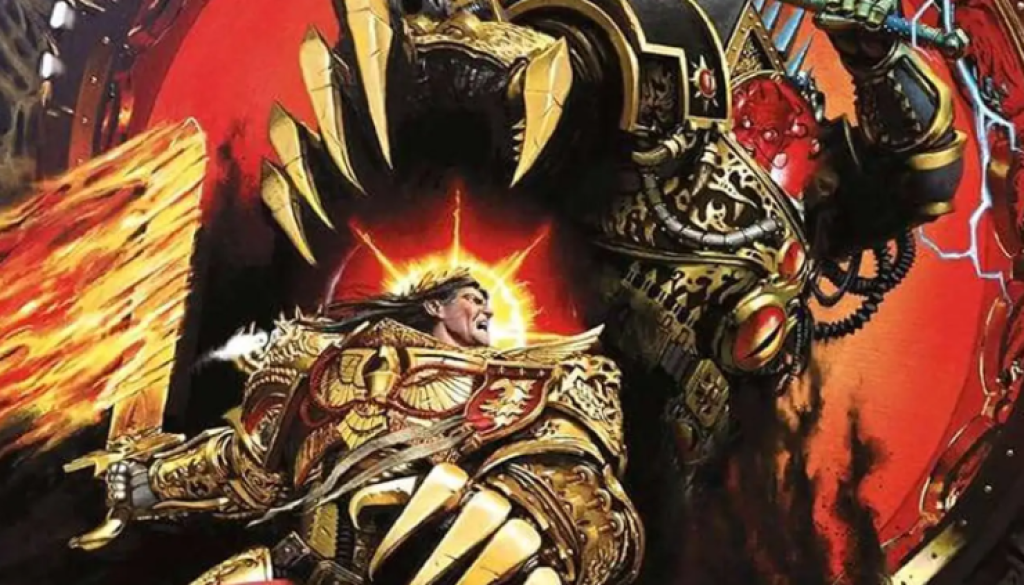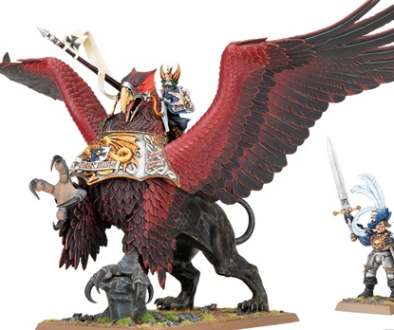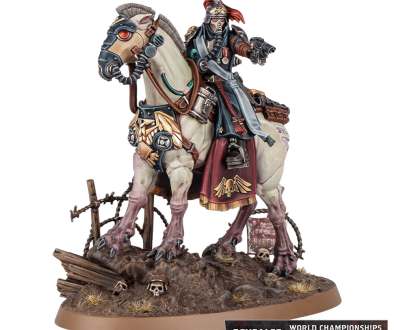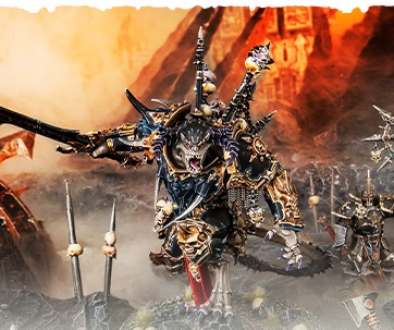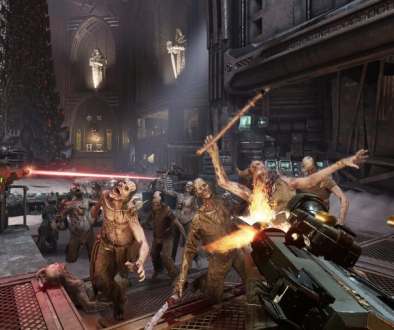At Lore’s End – Horus Heresy Moves On
The Horus Heresy, which is the foundational myth of Warhammer 40,000, had a very prosaic origin: Games Workshop couldn’t afford to package miniatures representing two factions in 1988.
During the 1980s, Adeptus Titanicus was Warhammer 40,000 with mechs. But a boxed set of 12 miniature Titans is expensive to produce and to cut costs, 6 giant robots were needed for each force.
There is a civil war in the setting’s history that explains why the Imperium fought against palette-swapped versions of its own mechs. It is referred to as the Horus Heresy.
One of the earliest Realm of Chaos supplements published the same year as Adeptus Titanicus, detailed the Horus Heresy and included a black-and-white illustration by Adrian Smith depicting the climactic duel between Horus and the Emperor.
Art books and magazine stories followed. But they were mostly broad strokes. It wasn’t until the 21st century that we got more specifics.
Initially, Horus Rising by Dan Abnett came out in 2006, with a slow-and-steady, fine-grained look at events, and readers knew it would have to be a series on a much bigger scale than they were used to. It might have grown to 10 or 12 volumes, but no. In the end, there are 54 books stamped with The Horus Heresy logo, followed by another 10 titled The Horus Heresy: Siege of Terra.
There are 54 Horus Heresy books, but many of them are anthologies of short stories tangential to the main story. We only get to 10 Siege of Terra books because the finale, The End and the Death, took three volumes to publish.
Whatever way you count it, and even if you ignore the comic books and audio dramas, the thing is incredibly long. While several writers contributed to the series, The End and the Death is written by Dan Abnett, just like Horus Rising. The End and the Death is a trilogy that contains enough material to fill four novels.

